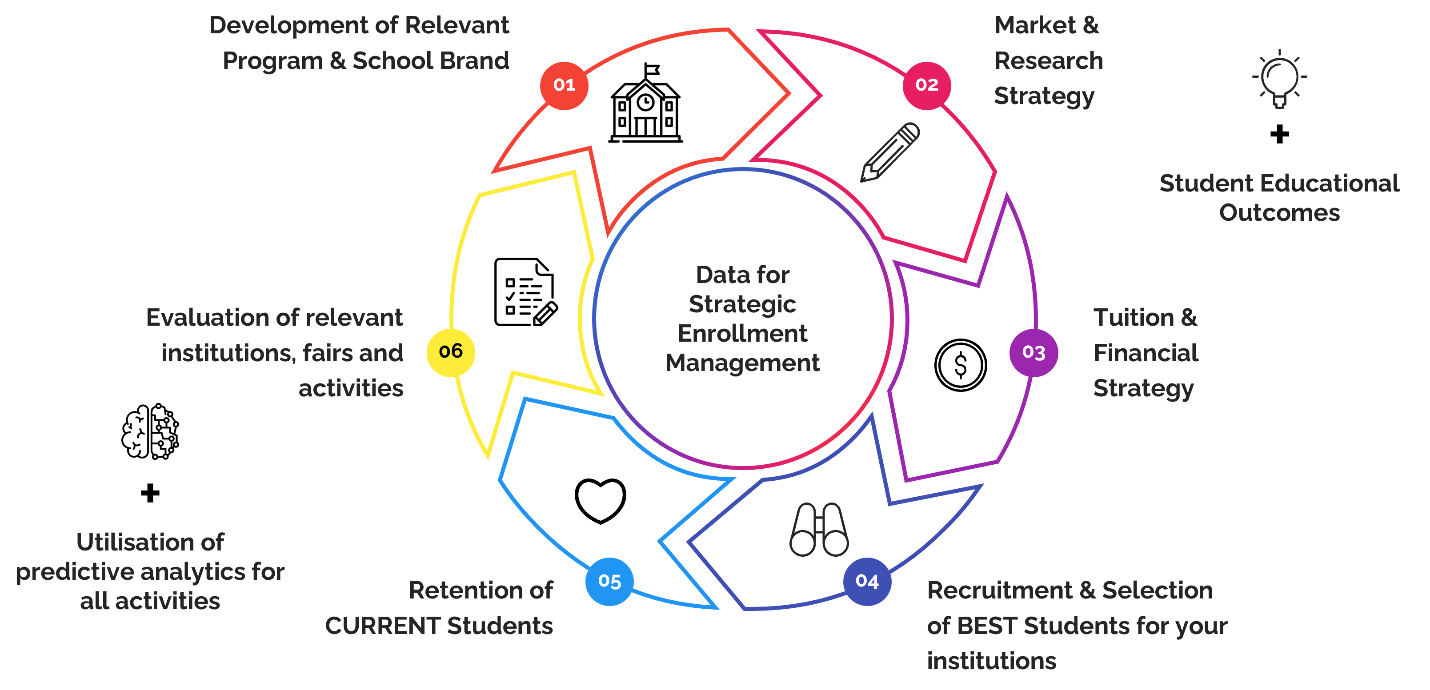
Sponsored by FrequencyFoundry
Before we talk about what you’re doing wrong, let us take the time to appreciate your appreciation for data and the savviness you demonstrate by using that data to make decisions. Well done!
After that, here’s a quote from Clifford Stall to remember.
“Data isn't information; any more than fifty tons of cement is a skyscraper.”
Now let’s explain why. If you had an existing definition for SEM in your institution or if you were to google it, you will find some combination of the following.
Strategic Enrollment Management is a holistic and comprehensive accumulation of processes designed to achieve and maintain the optimum recruitment, retention, and attainment of students, where “optimum” is defined within the context of the Institution.
SEM is institution-wide, cross-lifecycle, and brings together Institution AND Student goals.

Notice the emphasis on Institution & Student goals. Enrollment strategies must focus on the goal of the students and their success beyond the traditional context of just graduating the student. This requires a holistic understanding of the student beyond transactional data within a student information system, such as what’s on their program application or what their grades were. Academic transactional data especially is a trailing indicator. Not one that gives you the wisdom or insight to position the student for success before a potential low grade. Capturing data at every stage of the student lifecycle from the time of their first inquiry through to their graduation and beyond becomes critical to ensure that the student's goals are met as well.
Data becomes a foundational block, but by itself isn’t actionable. This is what your SIS provides you. Lifecycle Data exists within institutions across multiple records systems but is often disparate, disconnected, and siloed.

To truly gain the knowledge, understanding, and wisdom from raw data, these various datasets from multiple systems must be viewed together as one. However, connecting data from different systems can be expensive, time-consuming, and ineffective. What then is the solution?
Cross-Lifecycle CRM: A foundation for successful SEM and the future of a great student experience

As the world around us changes, so does the very process of learning. Institutions are transforming to put the student first, emphasizing the student experience. We already know that student experiences happen when they visit your website, walk into the campus, exchange an email, phone call, or meet with an advisor. “Great experiences,” however, are architected. The process of creating a “wow” experience starts with understanding your student and making their whole College or University experience personal. This is where having a common data platform to gather all those insights, interaction-related data, transactional data, non-transactional behavioral data becomes critical. This also solves the problem of integrating multiple systems.

Referred interchangeably as a Cross-Lifecycle, Institutional, Enterprise, or Full Lifecycle CRM system, a true Student Relationship Management system would be able to track, measure, and manage data for a student across the lifecycle adding qualitative, behavioral, and interaction data while acting as a data aggregator and bringing in data from other critical systems such as the SIS and the LMS. FrequencyFoundry saw the need for this common data platform and aggregator data nearly 11 years ago when they launched the first version of greymatter full lifecycle CRM.
A full-lifecycle CRM has now become your most strategic enrollment management tool by providing true knowledge about a student by combining engagement, academic and behavioral data. Insight is great, but knowledge is actionable. This article from the Higher Ed specialists at Alithya provides insights into the different types of insights, such as Predictive Analytics and Prescriptive Analytics, and how they can be applied in the context of your institution’s Enrollment Strategies.
At the risk of oversimplifying, Predictive Analytics gives you insights into future performance, trends, and predictions. Prescriptive Analytics takes that information and presents you with actionable knowledge such as recommendations on what to do based on the trends and predictions. But action typically requires people, time, and effort. For example, if your CRM system provided a list of students with the highest risk scores, that still requires your advisor to reach out to those individuals.
greymatter has been built to be an insightful CRM providing you with the knowledge required to drive a great experience and as a system that takes action on that knowledge based on business rules predefined by you. This means that in the above example, the CRM system would act on those individuals with the highest risk score, looks at the prescribed steps, and initiate a nudge with possible dates and times to meet the advisor.
To watch this in action or to learn more about how some Colleges and Universities are creating “wow” for their students across the lifecycle from recruit, admit, retain to graduate and beyond,
reach out to FrequencyFoundry for a demonstration.